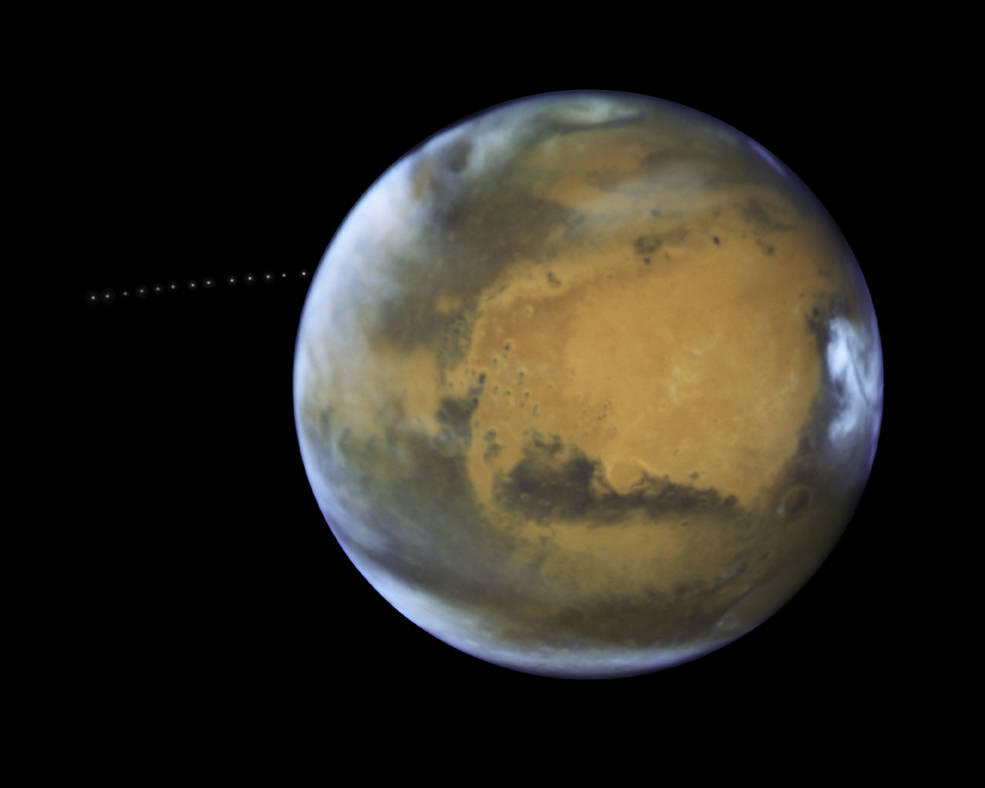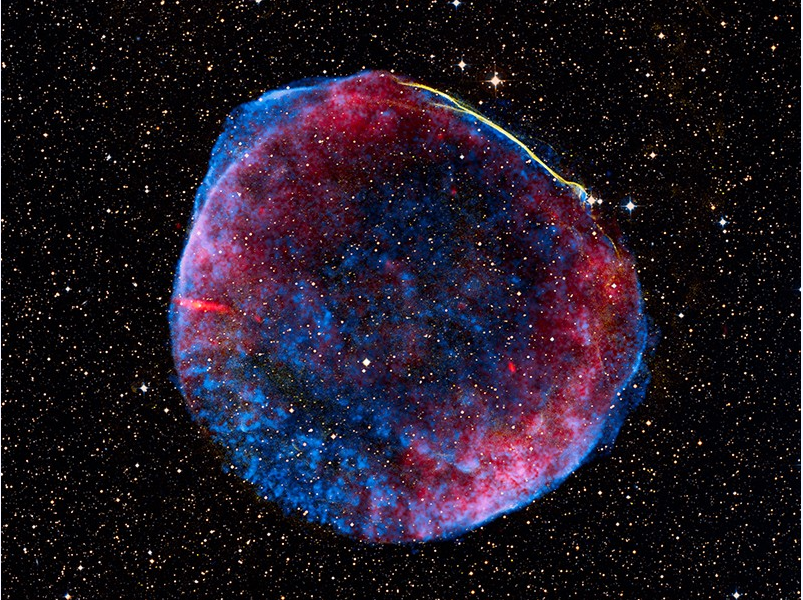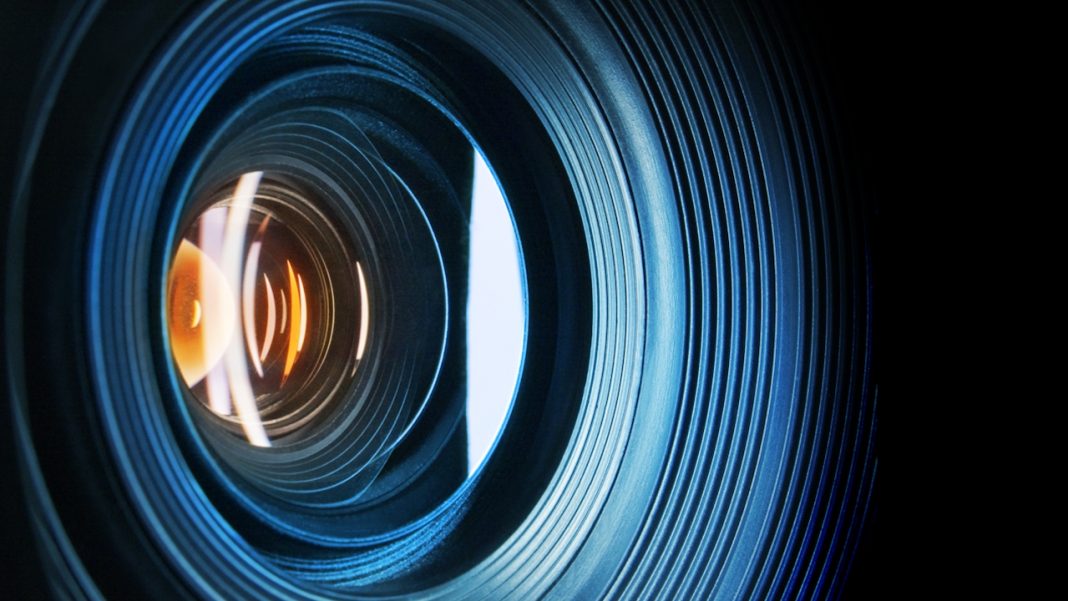In May 2016, the Hubble Space Telescope (NASA) took 13 pictures over 22 minutes of Mars, and one of its smallest moons was unintentionally capture during the process. A recent video from NASA shows part of the moon’s orbital progress during its photobomb session.
Not only is Phobos a small moon for Mars it also one of the most diminutive moons in our solar system. At only 11 by 13.5 by 16.5 miles, it would fit inside the National Capital Beltway, and it moves so fast it finishes its orbit in under eight hours — faster than Mars rotates on its axis. That means that during the almost 25 hour Martian day, Phobos can be seen three different times, taking laps around the Red Planet.
First discovered in 1877 by Asaph Hall, who was searching for Martian moons, it was named after the ancient Greek god of fear, one of two sons Ares, the god of war, named Mars in the Roman mythology. Another small moon, discovered shortly before Phobos, was named Deimos, for another of Ares’ sons, the god of terror.
Phobos was first photographed in 1969, a few days after the Apollo 11 mission, when Mariner 7 traveled past Mars and snapped a close-up of the moon.
Since then many more photos have been taken of Phobos revealing more and more interesting details about the unusual satellite.
Both Deimos and Phobos are of unknown origins, speculated to be errant asteroids trapped in Mars’ gravity, or a compacted collection of dust and rubble held together under a thin crust, or even they could be part of Mars itself broken loose by an impact with a larger object.
However, in 30 million years or so the tiny moon may no longer exist as pictures show that Phobos is being ripped apart by Mar’s gravity. The moon orbits a mere 3,700 miles above Mars which makes its dusty surface susceptible to tidal interactions creating the shallow and long grooves seen in pictures of Phobos.
Interestingly, if you could stand on the surface of Phobos, facing Mars, the Red Planet would consume 25 percent of the sky, always looming on the horizon. On the other hand, from the Martian surface, Phobos regularly eclipses the sun, but it is not large enough to completely cover the star.
More News to Read
- Breakthrough IBM Z Mainframe Promises to Stop Data Theft
- Quantum Data can be Secure even When Remote Accessed with Traditional Computers
- More Giga factories to open in U.S., Musk Announces
- New ESA Mission: Manmade Spacecraft to Orbit the Sun and Detect Gravitational Waves
- UM Solar Car Race Team Wants to Win The American Solar Challenge With Novum











